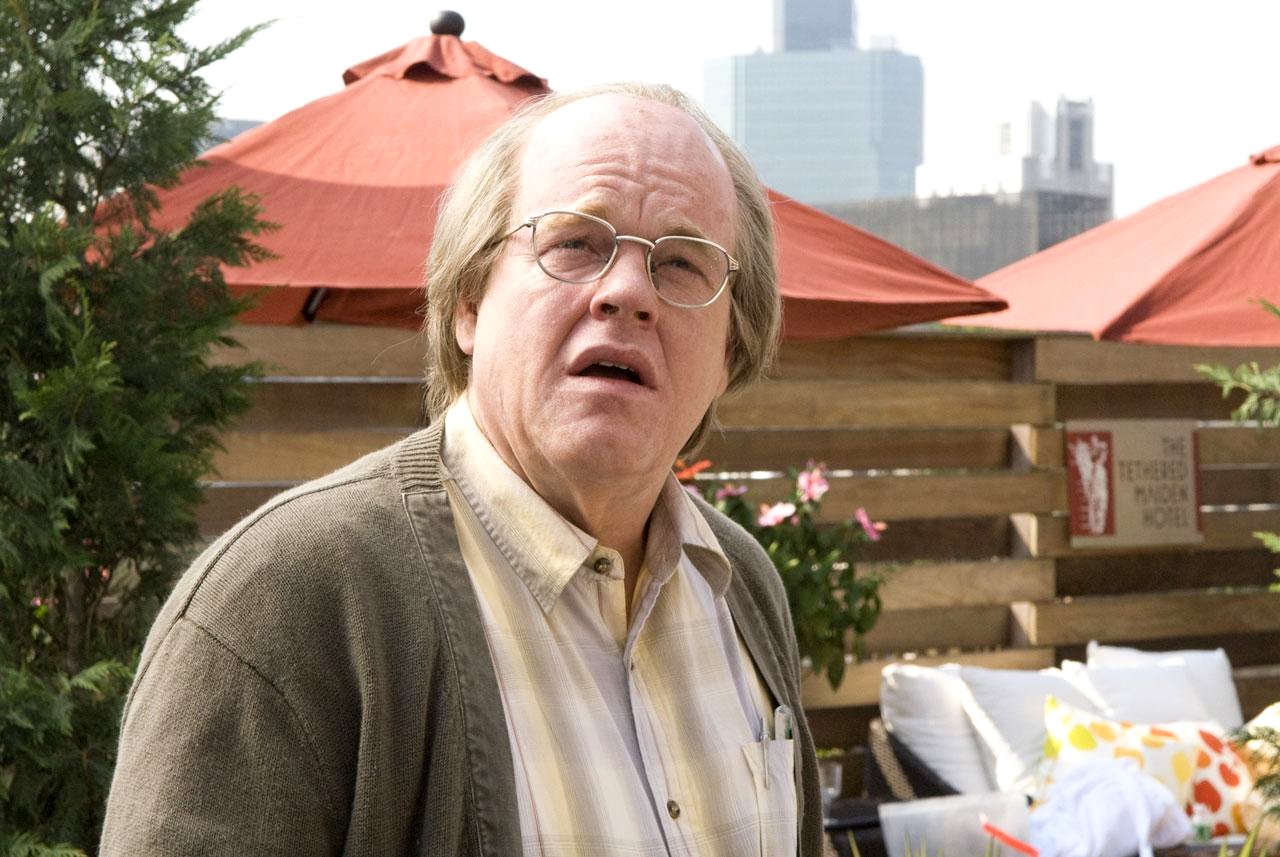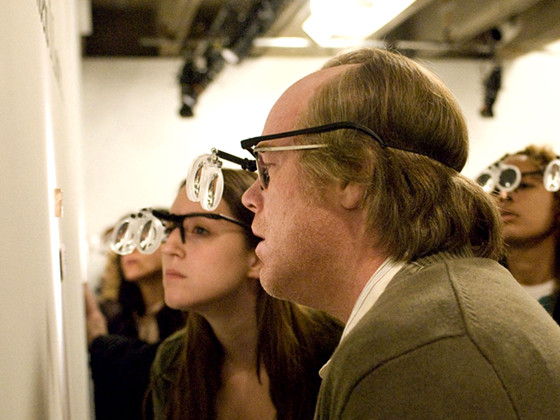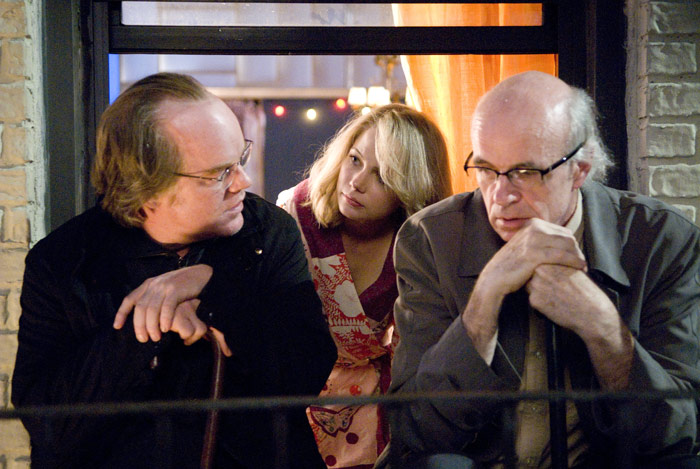
Acting is a common theme within existential philosophy. It makes sense, when you think about it. When there is nothing essential or permanent underneath the constant flux of reality, is there any concrete sense of self? Or are we all just playing different parts and roles, the accumulation of which adds up to something seemingly solid? When were you truly your most “authentic” self? When you were five years old, or 20, or 50? Does one action define who you are?
For instance, if you do one very bad thing, say, cheat on your spouse, are you permanently a cheater? Is that who you are, does it become part of your identity? We tend to remember and emphasize the worst characteristic of others, so human nature would tend towards remembering you that way. But if this happened early on in your relationship, after which you spent fifty years together in bliss with no stepping out of bounds, would it be fair to you to be known as a cheater, forever defined by that one event? Albert Camus wrote, “Yes, hell must be like that: streets filled with shop signs and no way of explaining oneself. One is classified once and for all.” One could translate that into saying that one is destined to be one thing for their life, boxed in by walls which destroys the complicated and ever-shifting nature of human beings. One is no longer free to become who they want to be. There is no more freedom, no more hope. Nothing towards which we are reaching.
Caden Cotard (Philip Seymour Hoffman) is a depressed man. Just watching him breaks your heart and soul. A theater director and hypochondriac, he cuts his head on the mirror while trying to shave and his wife, Adele Lack (Catherine Keener), fantasizes about him dying so that she can start over without feeling the guilt of leaving him (which she eventually does anyways).
Not much else can truly be understood about the film. In a realistic sense, that is. The film moves in and out of surreal absurdism, metaphor stacked on metaphor stacked on shaky metaphor. The sense of continuity and character building is brittle; some are suddenly replaced by others playing the same character. Most of the plot takes place within Cotard’s mind (maybe).
No movie has ever been so honest about human experience. Not just the stories that people experience, those we tell to younger generations when we get to be old, but the real, visceral, moment to moment experienced reality. The philosopher Thomas Nagel wrote an essay about what it is like to be a bat. This movie presents what it is like to be human.
People have a tendency to interpret their lives in one fell swoop, with simplistic storylines and other characters who boil down to cardboard cutouts. It takes a lot of hard work to remember that every other person you meet has a story just like yours, filled with love and loss, passion and dullness, enjoyment and anger. Cotard says, “There are nearly thirteen million people in the world. None of those people is an extra. They’re all the leads of their own stories. They have to be given their due.” When you put all of these stories together, the world becomes a lot messier. These walls and compartments we build in our mind start to break down and blur into each other. The other actors in our lives are not the neat and cleanly categorized beings we think of them as. They have their own wills and desires, their own hopes and dreams, their own humanity.

How does the mind deal with it all? We build walls and compartments, in order to organize our experience into neat categories so that we can move through the world and have a sense of what we are doing and need to do, to be able to say “this experience was bad” or “maybe next time I’ll do it differently.” We wear different masks and play different parts depending on the situation, despite the fact that most situations are too complex for any of these simplistic masks we don. Here’s what the writer Karl One Knausgaard wrote about the self, in his book So Much Longing In So Little Space:
“But what is the self beyond the story? One way of seeing it is as a place that is continually becoming, where what is happening is continually merging with what has happened in ways and forms determined by previous experiences more or less powerful and decisive, but regardless of how rigid they might become eventually, there will still be movement, albeit along the same channels. The self is a work in progress, it understands itself through its memories but lives its life between them, in bits and pieces, in the present and in the past, in thoughts and emotions. And that is my story about the inner: something chaotic that one seeks to control through habits and experiences, sketch-like, unfinished, raw and unrefined.”
Compare this with Millicent, who is auditioning for one of the roles of Cotard:
“Caden Cotard is a man already dead, living in a half-world between stasis and antistasis. Time is concentrated and chronology confused for him. Up until recently he has strived valiantly to make sense of his situation, but now he has turned to stone.”
Cotard gives her the role of himself right away, because she understands. Cotard barely lives, spending most of his time obsessing over his memories and trying to make sense of his experience. Time is frantic and confused, and life too grand to truly understand. Imagination, while often a wonderland of beauty and creativity, can also seed a darker side, where anxious thoughts and obsessive worries can mold someone into a sense of paralysis and inability to move. It can also create delusions of the mind that infiltrate all of our waking experience.
It is worth noting the psychological delusions that Charlie Kaufman works in throughout the film. The most blatant of these is Cotard’s delusion, which has profound implications given that the main character is named Cotard. This is a delusion where the sufferer believes that they are either dying or dead, or possibly even don’t exist.
This brings to mind questions of the reality of the film. Is Cotard actually dead? Or is there a point where he dies? You have to wonder at what point the real turns surreal, or objective exterior turns subjective interior. Strange things are happening throughout the film from the beginning, for instance, very early on when Olive poops green poop. Or perhaps Cotard is sleepwalking through his life and interactions, and the film portrays his attempt to wake up and truly live, however that looks.
The other delusion is Capgras delusion. This appears when Cotard is entering Adele’s flat, with the name on the number reading as “Capgras.” This is a delusion where someone believes that all of their loved ones and friends have been replaced by identical doubles. For this reason it is also known as Impostor’s Syndrome.

This also has an obvious relation to the sense of warped reality as experienced by Cotard, where actors are found to play people familiar to him, and then actors to play those actors, creating a stack of false identities. This is something we all have. Humans live many different lives, in many different capacities, with different goals and ideals. Others come in and out of our lives from time to time. Sometimes they are in it for an extremely short amount of time, but it might be long enough to change the outcome of the play. Sometimes they are in it for a long time, for the rest of the play. But just as the actors playing different people in the film keep changing, so do the others in our life, whether in our “real,” waking life, or in memory. Those we live our lives with are not static. Just as we are ever changing, growing, experiencing new things and evolving, so are those we live our lives with.
We should bring up the meaning of the title, at this point, the end, fittingly enough. Synecdoche, New York is clearly related to Schenectady, New York, a city near Albany in upstate New York where the film takes place. However, it is a clever play because the definition of synecdoche is, “a figure of speech in which a part is used for the whole or the whole for a part, the special for the general or the general for the special.” Cotard’s experience in this film is everyone’s experience. “What was once before you – an exciting, mysterious future – is now behind you. Lived; understood; disappointing. You realize you are not special. You have struggled into existence, and are now slipping silently out of it. This is everyone’s experience. Every single one. The specifics hardly matter.” We are all just trying to figure life out. Cotard, throughout the film, keeps saying that he knows how to do the play, as if he has just figured out this life, even right up until the end. We create stories to simplify reality and the events that happen to us to better understand and give our lives meaning, which, in the end, is different for everybody. As Hazel tells Cotard at one point, “Everyone has to figure out their own life, you know.”
You can feel the immensity of this in everything. We are constantly being reminded of the smallness of ourselves, how minuscule we truly are in light of everything (Adele’s paintings). This is perhaps best shown in the lyrics of what is, arguably, the theme song:
I’m just a little person
One person in a sea
Of many little people
Who are not aware of me
I do my little job
And live my little life
Eat my little meals
Miss my little kid and wife
And somewhere, maybe someday
Maybe somewhere far away
I’ll find a second little person
Who will look at me and say-
I know you
You’re the one I’ve waited for
Let’s have some fun
Life is precious, every minute
And more precious with you in it
So let’s have some fun
This film is a masterpiece. Some critics were harsh, calling it self-indulgent and narcissistic. Perhaps it is. But it is also an anxious fever dream, obsessed with finding the significance in life, meaning in relationships, and truth in reality. If it succeeds is a matter of interpretation, just like our own lives. Metaphor and allegory pervade it with a sense of tension, dread and wonder. The city is built up, only to erode at the end, which is built into the beginning.